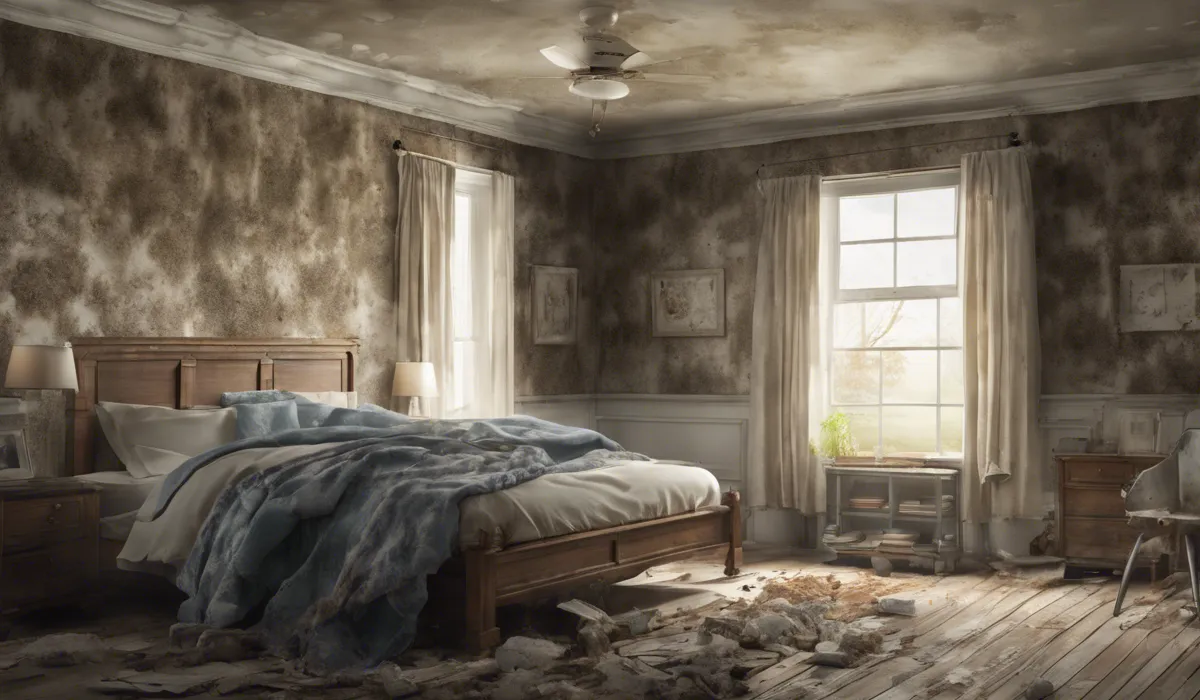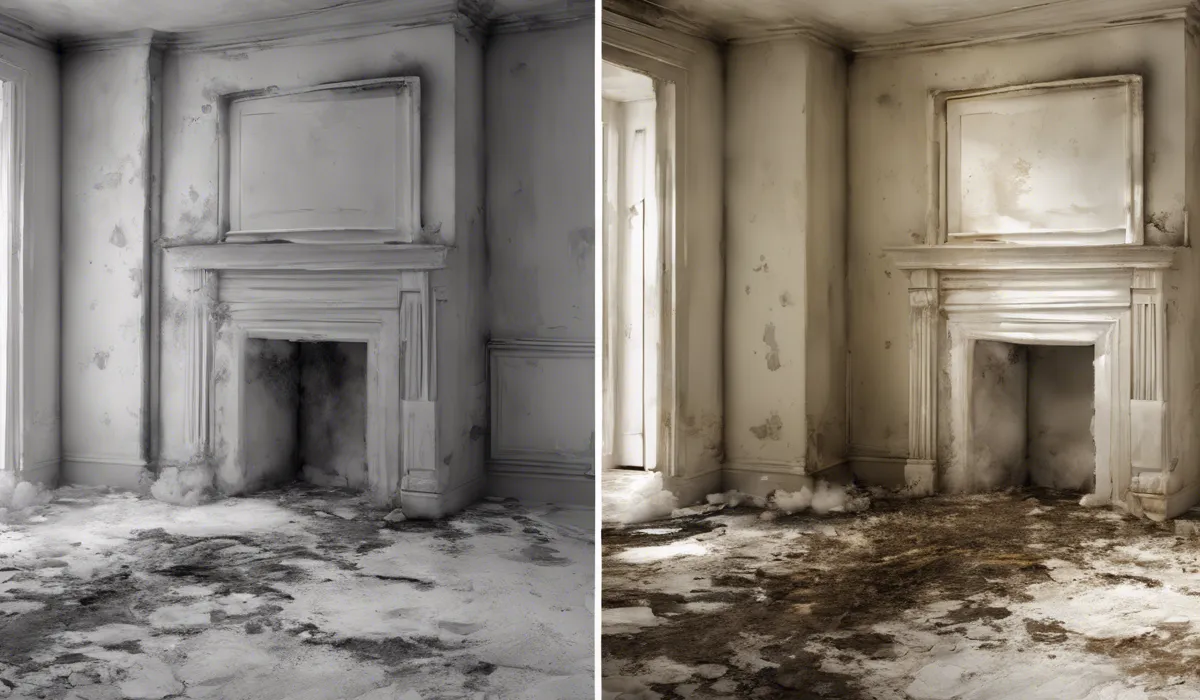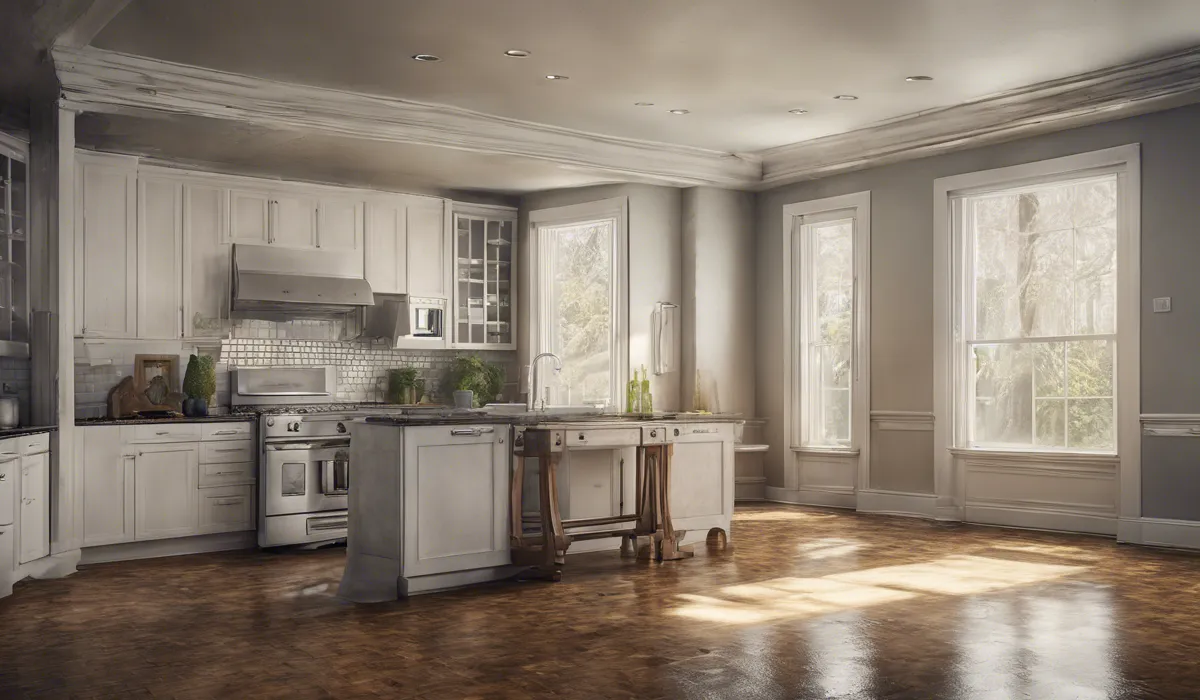To fix mold in a house, identify and repair the moisture source. Clean small mold patches with a solution of 1 part bleach to 10 parts water. For larger infestations, hire professionals. Ensure good ventilation and keep humidity below 50% to prevent future growth.
Identifying Mold in Your Home

Signs and Symptoms of Mold Presence
Spotting mold in your house can be straightforward if you know what to look for. Visible signs include dark spots on walls, ceilings, and floors which can range in color from black and green to white and orange.
Some molds even have a fuzzy appearance. Beyond sight, a musty or earthy smell often indicates mold growth, even if you cannot see it directly.
People may also experience symptoms such as sneezing, coughing, and headaches, which can suggest a mold issue, particularly if these symptoms improve when outside of the home.
Areas Prone to Mold Growth
Mold loves damp, dark, and warm places. Check areas where moisture is common such as bathrooms, kitchens, basements, around windows, and under sinks. Do not forget hidden spaces like behind drywall, under carpets, and in the attic.
Places that have experienced water damage or leaks are especially susceptible to mold growth.
Tools and Techniques for Mold Detection
For detecting mold, you can use tools such as moisture meters to identify wet areas where mold might grow.
A flashlight can help inspect dark corners. For a more thorough examination, consider a mold test kit, which can be purchased at home improvement stores.
These kits usually involve taking a sample and sending it to a lab for analysis, providing a detailed report on mold presence.
Difference Between Mold and Mildew
Understanding the difference between mold and mildew is important. Mold is often thicker and comes in a variety of colors, while mildew is usually flat and white or gray.
Mildew typically grows on surfaces and is easier to clean, whereas mold can infiltrate materials like wood and drywall, requiring more intensive treatment.
Removing Mold Safely and Effectively

Safety Precautions and Protective Gear
When removing mold, safety comes first. Wear protective gear such as gloves, goggles, and an N-95 respirator to prevent mold spore inhalation.
Keep the area well-ventilated, and seal off the workspace with plastic sheeting to avoid contaminating other parts of your home.
Natural vs. Chemical Mold Removal Agents
For those preferring natural methods, vinegar or baking soda solutions can be effective against minor mold.
However, for more stubborn mold, a solution of 1 part bleach to 10 parts water is commonly used. Remember to never mix bleach with ammonia as it creates toxic fumes.
Step-by-Step Guide to Cleaning Mold Infested Areas
Begin by fixing any leaks to prevent further moisture. Clean small areas of mold with your chosen agent, scrubbing the surface thoroughly and then allowing it to dry completely. For larger areas, it might be best to remove and replace the affected materials.
Always dispose of any contaminated materials in airtight bags to prevent the spread of spores.
Tips for Preventing Mold Spores from Spreading
During cleanup, use an air purifier to capture airborne spores. Cover air vents to keep spores from entering your HVAC system.
After cleaning, dry the area with fans and dehumidifiers to prevent mold from returning. Wipe down any surfaces where spores may have settled using a damp cloth.
Preventing Future Mold Growth

Importance of Moisture Control and Ventilation
Controlling moisture is key to mold prevention. Repair leaks promptly and ensure your home has proper ventilation, particularly in areas like the bathroom and kitchen.
Use exhaust fans and consider a dehumidifier in damp areas. Ensuring good airflow can significantly reduce the potential for mold growth.
Recommendations for Humidity Levels and Temperature Control
Keep indoor humidity levels below 50% using air conditioners and dehumidifiers. Use a hygrometer to monitor humidity.
Furthermore, maintain a consistent temperature in your home to prevent condensation, which can lead to mold.
Regular Cleaning and Maintenance Schedules
Regular cleaning can prevent mold spores from taking hold. Clean and vacuum your home frequently, paying special attention to mold-prone areas. Periodic checks for water damage and leaks also help nip potential mold problems in the bud.
Long-Term Solutions and Home Improvements
Consider long-term solutions such as improving your home’s insulation to reduce condensation.
If you’re in a particularly humid climate, investing in mold-resistant products like drywall or paints can offer additional protection against mold growth.
FAQs About Fixing Mold in a House
How do you identify the source of moisture causing mold in a house?
To identify the moisture source causing mold, look for common indicators such as water stains, peeling paint, condensation, or dampness on walls, ceilings, or floors. Also, check for leaks in the roof, pipes, or foundation.
What is the best solution to clean small mold patches?
Small mold patches can be cleaned with a solution of 1 part bleach to 10 parts water, applying it to the affected area and scrubbing gently.
When should you hire professionals to handle mold infestations?
For larger mold infestations, or if the mold is in hard-to-reach places, it’s best to hire professionals to ensure the mold is properly and safely removed.
How can you prevent future mold growth in your house?
To prevent future mold growth, ensure good ventilation, fix any leaks promptly, and keep indoor humidity levels below 50% using dehumidifiers if necessary.
Is it safe to clean mold by yourself?
Cleaning small areas of mold by yourself is safe with proper precautions, such as wearing gloves and a mask. However, for large areas or if you’re sensitive to mold, it’s safer to contact professionals.
Final Thoughts
To effectively address mold in a home, it’s critical to first rectify any moisture issues. Small areas of mold can be cleaned with a diluted bleach solution, while larger problems may require professional remediation.
Maintaining proper ventilation and a humidity level below 50% is essential to inhibit further mold growth.
